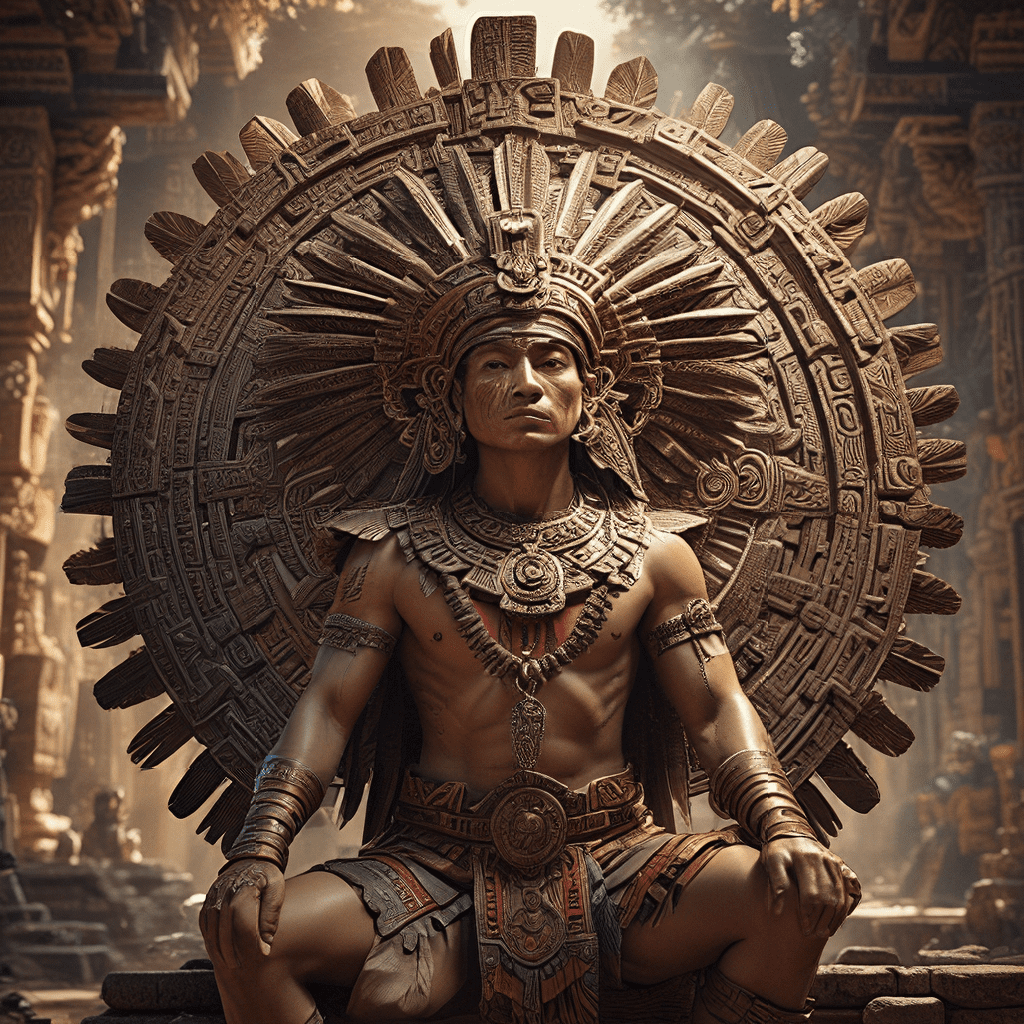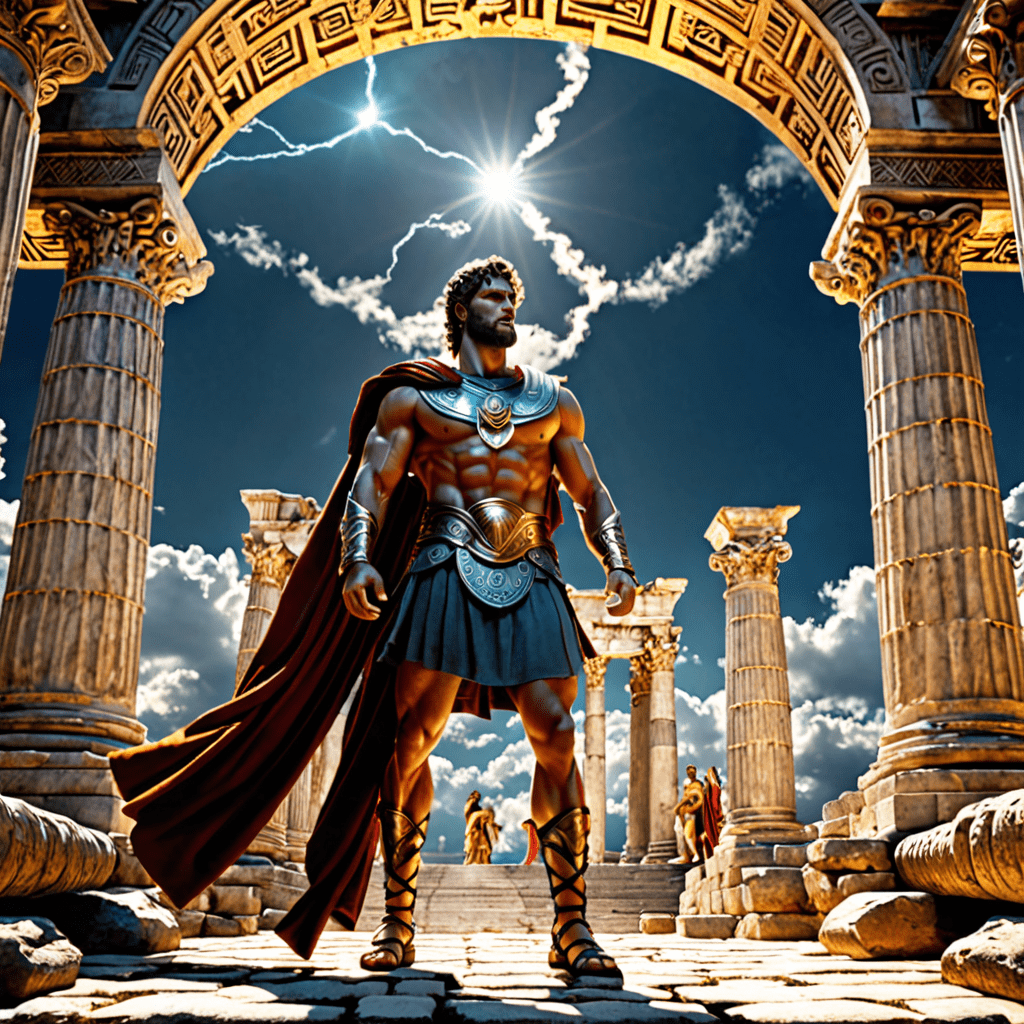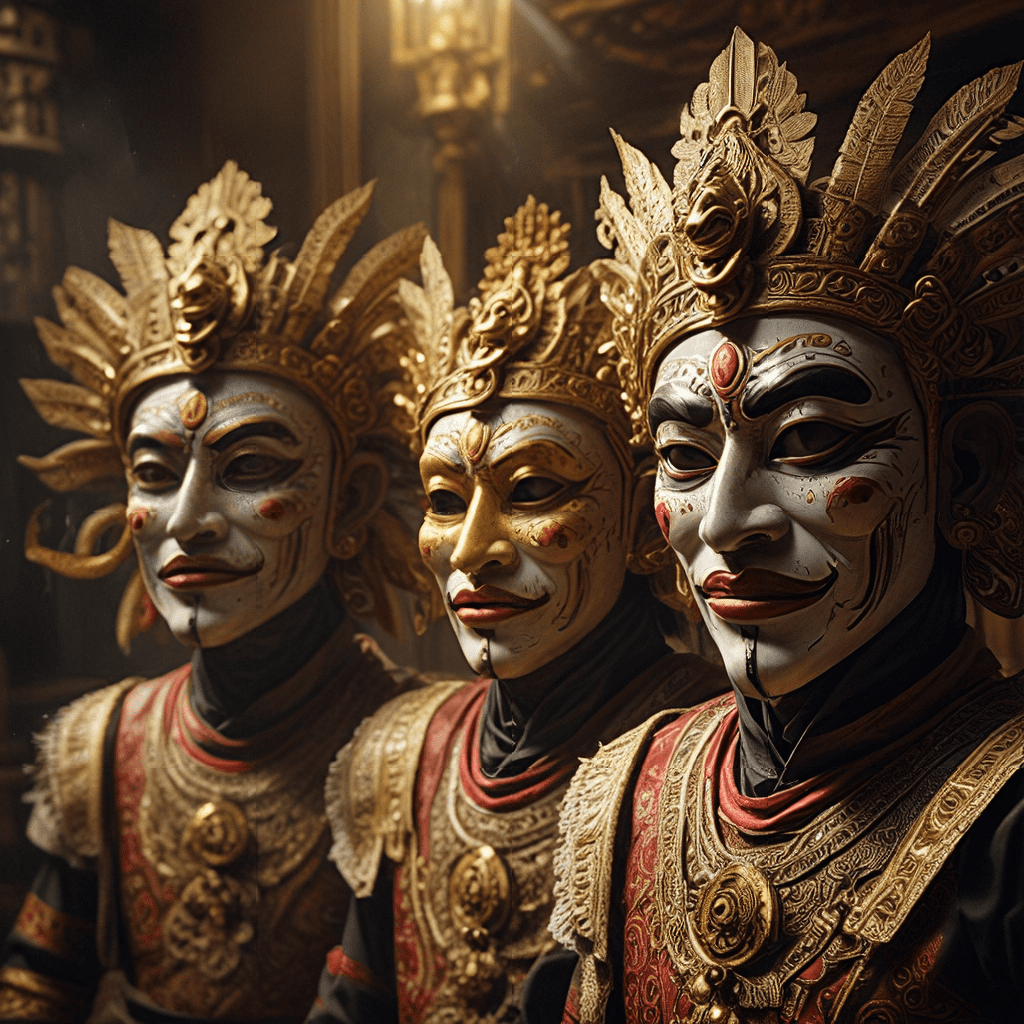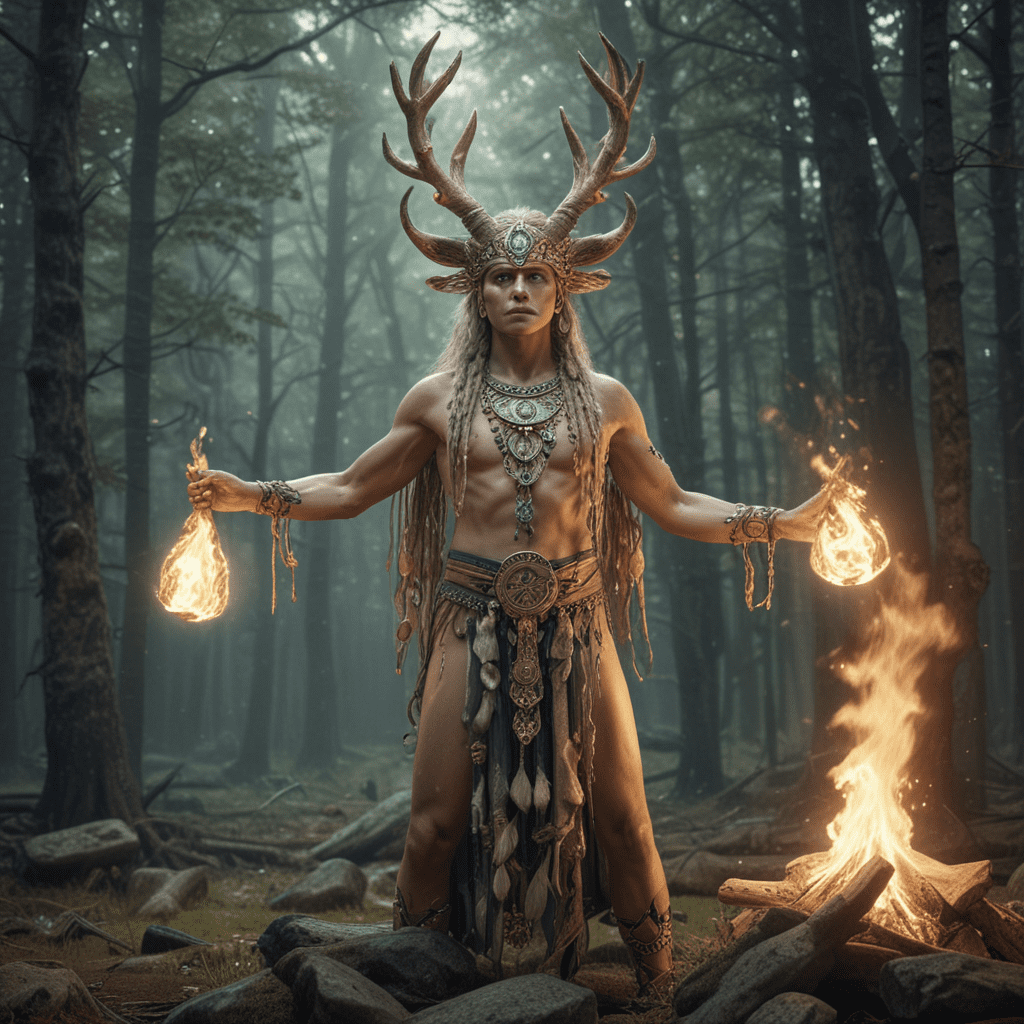The Fifth Sun: A Cyclical View of Time
The Aztecs, an ancient civilization that flourished in central Mexico, held a unique and profound understanding of time. They believed that the universe existed in cycles, with each cycle marking a distinct era. These cycles were known as "Suns," and the Aztecs lived in the "Fifth Sun," the present era.
The concept of the Fifth Sun is a cornerstone of Aztec cosmology. It describes a world that was created after the destruction of previous worlds by various cataclysmic events. The legend tells of four previous Suns, each representing a different era, each destroyed by a different force, such as floods, fire, or wind. The Fifth Sun, marked by the birth of the Aztec civilization, was the current age, believed to be enduring until another catastrophic event.
This cyclical view of time emphasizes the interconnectedness of creation and destruction. It portrays a universe that is constantly evolving and undergoing transformation. This cyclical view also served as a cautionary tale, reminding the Aztecs of the fragility of their existence and the importance of ensuring the longevity of their civilization.
The Gods of Time and Creation: From Tezcatlipoca to Quetzalcoatl
The Aztecs believed that powerful deities governed time, creation, and the universe. Two of the most prominent deities were Tezcatlipoca and Quetzalcoatl, both associated with creation and destruction.
Tezcatlipoca, a deity known as the "Smoking Mirror," was a powerful and often capricious god. He was associated with the night, darkness, magic, and the unknown. He was also believed to be a god of both creation and destruction, capable of shaping destinies and causing chaos. Tezcatlipoca was a force of change and unpredictability, constantly reshaping the universe.
Quetzalcoatl, translated as "Feathered Serpent," was a god of light, knowledge, and civilization. He is associated with the morning star, Venus, and is believed to have been a benevolent ruler who brought wisdom, culture, and the arts to humankind. However, he was also linked to the destruction of a previous world, highlighting the duality of creation and destruction.
These deities, along with others like Tonatiuh (the Sun god) and Tlaloc (the rain god), played crucial roles in the Aztec concept of time, influencing the rhythms of life, seasons, and the cosmic order. Their actions and interactions shaped the events of the universe, and their presence was felt in every aspect of Aztec life.
The Role of Sacrifice in Maintaining the Cosmic Order
The Aztecs viewed sacrifice as a critical element in maintaining the cosmic order. They believed that the gods needed sustenance to uphold the universe and that human sacrifice was the most potent form of offering. The act of sacrifice was seen as a way to appease the gods, ensure the sun's journey across the sky, and prevent the world from succumbing to darkness and chaos.
Sacrifices were elaborate and ritualistic, often involving a procession, symbolic gestures, and the offering of hearts and blood. The Aztec calendar was punctuated by specific festivals dedicated to different gods, marked by a series of sacrifices.
The heart, in Aztec belief, was the seat of life force and was seen as the most valuable offering. Blood was also considered sacred and potent, capable of sustaining the gods. The sacrifice was not meant as a means of punishment but as a way to appease the gods and maintain the delicate balance of the universe.
The Calendar Stone: A Visual Representation of Time and the Universe
The Aztec Calendar Stone, also known as the Sun Stone, is a massive and intricate sculpture that serves as a powerful visual representation of the Aztec concept of time and the universe. This circular stone, carved with intricate details, depicts the cyclical nature of time, the cosmic order, and the five previous Suns.
The central image of the Calendar Stone represents Tonatiuh, the Sun god, and the four concentric circles around him depict the four previous Suns, symbolizing the cycle of creation and destruction. The outer ring represents the year, divided into 18 months, and the innermost ring symbolizes the 20 days of the Aztec ritual calendar, the "Tonalpohualli."
The Calendar Stone is not merely a calendar; it is a complex symbol of Aztec cosmology. It embodies the Aztecs' understanding of the universe, the cyclical nature of time, the importance of sacrifice, and the profound relationship between the human world and the divine.
The Aztec Concept of the “Tonalpohualli” (Divination Calendar)
The Aztecs had a second calendar, known as the "Tonalpohualli," which was a 260-day ritual calendar used for divination, predicting the future, and understanding the individual's destiny. This calendar was based on the combination of 20 day signs and 13 numbers, resulting in a unique cycle of 260 days.
Each day sign was associated with a specific deity, representing aspects of life, time, and the natural world. For example, the "Cipactli" day sign was associated with the monster that emerged from the primordial waters at the beginning of creation. The "Xiuhcoatl" day sign was associated with the fire serpent, a symbol of power and transformation.
The Aztecs used this calendar to determine favorable days for specific activities, from planting crops to embarking on journeys. They believed that each individual had a specific day sign associated with their birth, and this day sign would influence their destiny and personality. The "Tonalpohualli" provided guidance for navigating life, understanding the forces at play, and making choices based on an interpretation of the divine will.
The Importance of Rituals and Ceremonies in the Aztec Time Framework
The Aztecs believed in the power of rituals and ceremonies to maintain harmony with the divine and influence the flow of time. Their calendar was filled with festivals dedicated to specific deities, each marking a significant moment in the year, linked to the agricultural cycle, the movement of the sun, or the celebration of a particular god's power.
These festivals included rituals, offerings, sacrifices, and elaborate dances, all designed to appease the gods, ensure a bountiful harvest, and prevent the return of chaos. The Aztecs understood time as a dynamic force, constantly in motion, and their rituals were a means of influencing its course, seeking divine favor, and navigating the cyclical nature of existence.
The annual cycle of festivals and ceremonies was deeply interwoven with the Aztec concept of time. They viewed these rituals as a way to honor the gods, reinforce their relationships with the divine, and ensure the continued well-being of their civilization.
The Aztec Belief in the “Nahual” and the Transformation of Time
The Aztecs believed in a concept called "Nahual," which referred to a person's animal spirit or alter ego. It was believed that certain individuals possessed the ability to transform into animals, allowing them to move between worlds and access knowledge beyond the human realm. The "Nahual" was often linked to a specific animal, representing the individual's strengths, weaknesses, and hidden potential.
The idea of "Nahual" was connected with the Aztec understanding of time and transformation. They believed that time itself was fluid and could be manipulated through rituals, magic, or the power of the "Nahual." By transforming into their animal spirit, individuals could access hidden knowledge, transcend limitations, and interact with the spirit realm.
The "Nahual" represented a potent symbol of the interconnectedness of all things, the fluidity of time, and the ability to move between different realms of existence. The concept reflected the Aztec belief in the cycles of life and death, the transformation of energy, and the potential for individuals to transcend their human limitations.
The Influence of the Aztecs on the Modern Mesoamerican View of Time
The Aztecs' profound understanding of time has left a lasting legacy in Mesoamerica. Their cyclical view of time, their intricate calendar systems, and their focus on rituals and ceremonies have influenced the worldview of many indigenous cultures in the region.
The Aztec concept of time is still evident in many modern Mesoamerican traditions, from the use of calendars to the practice of rituals and ceremonies. Their belief in the interconnectedness of creation and destruction, the importance of sacrifice, and the power of the divine continues to shape the way many indigenous people in Mesoamerica understand the world.
The legacy of the Aztecs demonstrates the power of enduring cultural traditions and the lasting influence of an ancient civilization's understanding of time.
Theories on the Aztec Concept of Time
Scholars continue to explore and debate the Aztec concept of time. Several theories have been proposed to explain their complex understanding of this fundamental force:
- Cyclical Time: One prominent theory suggests that the Aztecs viewed time as cyclical, repeating in a series of cycles, each representing a distinct era or "Sun." This view reflects their belief in the interconnectedness of creation and destruction and the continuous flow of the universe.
- The Importance of Ritual: Another theory emphasizes the importance of rituals and ceremonies in the Aztec concept of time. They believed that through these rituals, they could influence the flow of time, seek divine favor, and maintain harmony with the cosmic order.
- Divination and Destiny: The "Tonalpohualli" (ritual calendar) played a significant role in Aztec life, and scholars believe it reflected their understanding of time as a force that could be divined and used to predict the future and understand individual destinies.
These theories highlight the multifaceted nature of the Aztec concept of time. It was a complex system of beliefs that encompassed cyclical patterns, divine intervention, individual destiny, and the importance of rituals in shaping the flow of existence.
The Enduring Legacy of Aztec Cosmology and Time
The Aztec concept of time is a remarkable testament to the civilization's intellectual prowess and profound understanding of the universe. Their intricate calendar systems, their belief in cyclical time, and their focus on rituals and ceremonies continue to fascinate scholars and inspire contemporary artists and thinkers.
The Aztecs' legacy extends beyond their calendar systems. Their cosmology, their view of creation and destruction, and their understanding of the interconnectedness of humanity and the divine have left an enduring influence on later cultures and continue to inspire new ways of thinking about time, the universe, and our place within it.
FAQ
Q: What is the "Fifth Sun" in Aztec mythology?
A: The "Fifth Sun" refers to the current era in Aztec mythology, believed to be the fifth world created after the destruction of four previous ones. Each "Sun" represented a different era, each destroyed by a different cataclysmic event.
Q: How did the Aztecs understand time?
A: The Aztecs believed that time was cyclical, repeating in a series of cycles, each representing a distinct era or "Sun." They also believed that rituals and ceremonies could influence the flow of time and maintain harmony with the cosmic order.
Q: What was the purpose of the Aztec Calendar Stone?
A: The Aztec Calendar Stone, also known as the Sun Stone, was a massive sculpture that served as a visual representation of the Aztec concept of time and the universe. It depicted the cyclical nature of time, the cosmic order, and the five previous "Suns."
Q: What was the "Tonalpohualli"?
**A: **The "Tonalpohualli" was a 260-day ritual calendar used by the Aztecs for divination, predicting the future, and understanding the individual's destiny. It was based on the combination of 20 day signs and 13 numbers.
Q: What is the "Nahual" in Aztec mythology?
A: The "Nahual" refers to a person's animal spirit or alter ego. It was believed that certain individuals possessed the ability to transform into animals, allowing them to move between worlds and access knowledge beyond the human realm.
Q: How did the Aztecs use rituals and ceremonies?
A: The Aztecs believed in the power of rituals and ceremonies to maintain harmony with the divine and influence the flow of time. They practiced elaborate rituals and festivals throughout the year to honor the gods, ensure a bountiful harvest, and prevent the return of chaos.



